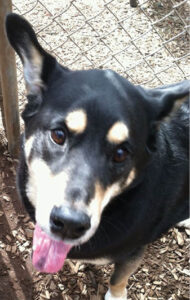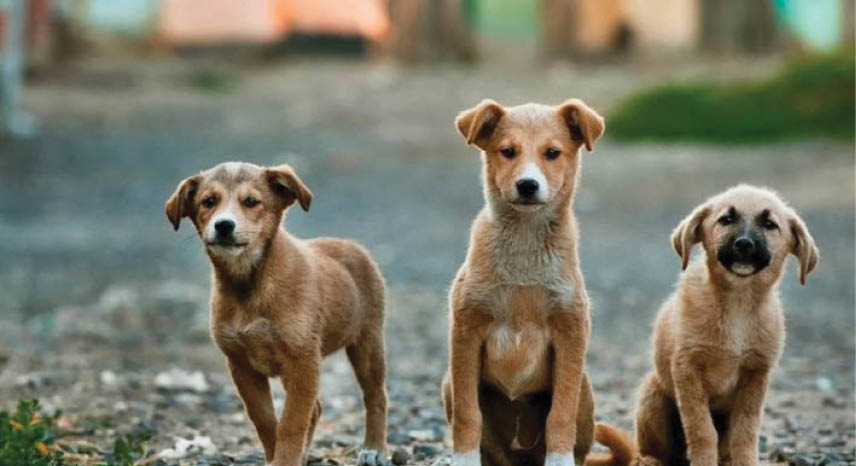 Besides our love for food, drink, humour and all things good in life, the Parsi community has a special fondness for dogs – know to be ‘man’s best friend’. Most Parsis go the extra mile for their pet dog/s as their favourite family member! Many also feed stray dogs occasionally or even every day. We consider dogs as our good and loyal friends in this life, as also protectors in the after-life.
Besides our love for food, drink, humour and all things good in life, the Parsi community has a special fondness for dogs – know to be ‘man’s best friend’. Most Parsis go the extra mile for their pet dog/s as their favourite family member! Many also feed stray dogs occasionally or even every day. We consider dogs as our good and loyal friends in this life, as also protectors in the after-life.
In village mohalla (neighbourhood) stray dogs are often given a name and fed twice daily. In fact, it’s a Zoroastrian tradition to offer ‘kutra no buk’ – a Gujarati expression for a morsel (actually it should be three morsels) of the family’s lunch or dinner, first to the mohalla canine. In Iran, Zoroastrians call it Chom-e shwa or meal for the dog.
Even a morsel of food (especially egg) that is ritually offered to the dead during the Stum ceremony should be offered to a dog. Egg symbolises immortality and feeding a dog (the favourite animal of Sarosh Yazata – the protector of the souls of the living as also of the departed) an egg that is ceremonially offered to the soul of departed, ensures that soul Sarosh Yazata’s protection.
No Ban On Feeding Strays: Based on two petitions, in October 2022, the Bombay High Court (Nagpur Bench) had observed that the problem caused by stray dogs had “increased beyond tolerable levels” and had passed a blanket ban on feeding stray canines and directed the Nagpur municipal authorities to penalise those violating its order with a fine of Rs. 200/-
Fortunately, the Supreme Court Bench of Justices Sanjiv Khanna and J K Maheshwari found the omnibus ban imposed by the Nagpur Bench of the Bombay High Court to be unreasonable and observed: “If stray dogs are not fed, they will become more aggressive,” and directed that no coercive action should be taken against citizens feeding stray dogs. Parsis, particularly, heaved a huge sigh of relief and on the day of the Supreme Court’s order, some even prepared special mutton biryani for themselves and their not-so-stray canine friends!
Parsis Led The First ‘Bombay (Dog) Riots’: Regarded as one of India’s most peaceful communities, Parsis, however, made history by triggering the first riot in Mumbai – popularly known as the ‘Bombay Dog Riots’ in 1832, when the British Magistrate of Police decided to adopt measures to control the city’s population of stray dogs. A regulation dated 1813 allowed the killing of stray dogs, especially during the hot summer months. However, in 1832 the Magistrate chose to adopt new methods to cull the dog population – it was decided that a handsome sum of money would be paid for each dog killed! This resulted in unscrupulous or overzealous dog-catchers killing dogs that were not aggressive. Reportedly, dog-catchers even entered private homes and killed pet dogs and mohalla adopted benign strays!
On 6th June, 1832, a crowd of Parsis physically attacked a group of dog-catchers near Bombay’s Fort and then marched to the city’s court to demand an end to the culling. The next day, several Parsi traders and other establishments also closed their businesses, causing economic disorder in the city. Working class Parsis along with their Hindus and Muslims supporters also went on strike, further paralyzing the city.
When the community heard that the British were mobilizing the city’s garrison, Parsis organized crowds to block porters and labourers in a successful attempt to prevent British troops from receiving food and water. However, by evening, the British garrison gathered in the city’s fort and the Riot Act was read out aloud and the crowd of protestors was subsequently broken up and leaders of the strike were arrested.
Soon after, the British government began to negotiate with leaders of the Parsi community, in an attempt to restore law and order. It was decided that rather than culling stray dogs on sight, the Magistrate would relocate aggressive dogs outside of the city. This was found to be an agreeable solution and the imprisoned protesters were released.
Of course, relocating stray dogs outside city limits was a solution worse than culling. Two centuries ago, much of suburban Bombay was jungle, and leaving dogs there meant making them prey to big cats like leopards and panthers. Allegedly, it was only a face-saving compromise on paper and dog-catching was avoided for a year though it was greatly reduced and regulated. Only the most aggressive dogs with a history of attacking local residents were picked-up and relocated outside city limits. All other stray dogs continued to guard mohallas against unwanted trespassers, especially at night, and enjoyed being fed twice a day by Parsis as also several Hindus, Christians and other communities.
Religious Importance Given To Dogs: In the Rigveda there is reference to ‘four-eyed’ dogs of Yama (the Divinity of Death), who keep vigil along the path which departed souls take to their future abode. Similarly, in Vendidad (13.9) there’s reference to two dogs who keep vigil at Chinvat (bridge of the separator) where souls are judged.
It is believed that besides their natural love for dogs, Zoroastrians in Iran as also in India, offered food to dogs in the hope that the celestial dogs which guard Chinvat would aid their soul as also the souls of their dearly departed. According to the Mahabharata, Yudhishthira approached heaven with a dog. However, the dog was actually Yama who appeared before Yudhishthira in the form of a dog. This is why many Hindus believe that caring for dogs can pave the way to heaven.
Four-Eyed Dog: Zoroastrians give special preference to the ‘four eyed’ dog (i.e., a dog with two flecks of different-coloured hair just above the two eyes) for religious ceremonies like the Barasnum, which priests undergo for purification and Sagdid which literally means sighting by the dog. As per the Vendidad, the demon or force of putrefaction which attacks a human corpse, retreats at the sight of a dog with four eyes and thus restricts contamination. Sagdid is performed when the corpse of a deceased Zoroastrian is placed on the marble or stone slabs for the funeral (paidust), when lifted from the stone slabs to the iron bier to be carried to the Dokhma and finally before consigning the corpse to the Dokhma.
Dog Categories And Care: The Vendidad and Pahlavi Dinkard refer to two main categories of dogs – Havara or the house protecting dog and Pasus haurva, the cattle protecting or herd dog. However, Vendidad (13.8) also refers to Vohunazga which is a dog without a master and loosely attached to the local community or mohalla (essentially a stray). A young untrained dog (also usually a stray) is called Tauruna.
Vendidad 13.49 asserts: “noit me nmanam viato histanti zam paiti ahura atam yezi me noit”, which means: “No house shall stand firmly founded for anyone on Ahura-created earth where there is no herd dog or house dog“.
In the Husparam Nask the proper quantities of food are listed for man, woman, child, and the three kinds of dogs i.e., herd dog, house dog and stray dog. A sick dog is to be looked after as carefully as a sick human-being according to Vendidad 13.35. A female dog in whelp must be cared for as caringly as a woman with child (Vendidad 15.19). Vendidad 15.45 requires puppies to be looked after with special care for at least six months.
According to Zoroastrian scriptures, hurting or not caring for a dog is considered a very grave sin. Even when a dog expires, the mortal remains of the dog should be wrapped in a Sudreh and quickly disposed with due care. Though Zoroastrians now bury their pet dogs, the Vendidad disapproves burial of both human and dog corpses.
Persian Poem – ‘Love Dogs’: It may be apt to conclude with a verse by the thirteenth century Persian poet, Rumi who is widely known for his mystic devotional poems. Rumi’s poem, ‘Love Dogs’ speaks of a cry of longing from both, the perspective of the caller and the one who is called for. The poem begins with a man calling out (to Divinity) for comfort and connection. The tired and confused man then falls asleep and encounters a guide in his dreams, who asks him why he stopped praying. The man replies: “because I’ve never heard anything back.”
The guide then reveals:
“This longing you express… Is the return message! The grief you cry out from… Draws you toward union; Your pure sadness that wants help… Is the secret cup.
Listen to the moan of a dog for its master… That whining is the connection; There are love dogs no one knows the names of… Give your life to be one of them!”
- Celebrate A Joyful Week Of Love - 8 February2025
- Celebrating Mid-Winter - 1 February2025
- Commemorating The ‘Holy Book’ Of India - 25 January2025

Wahhh what great work y are doing for..the welfare of animal..and. humans as well…you may be blessed with.full.of.life, well done…